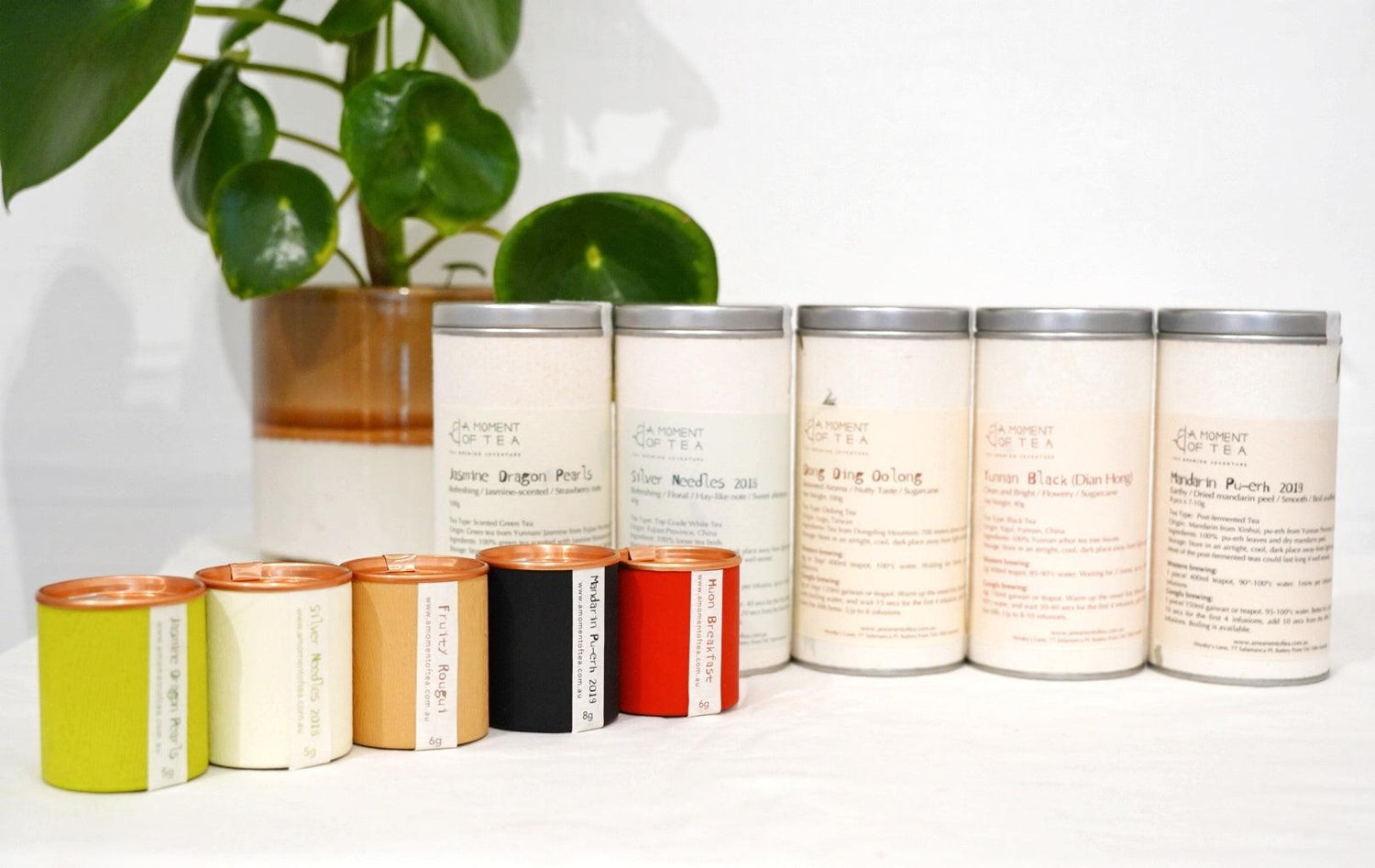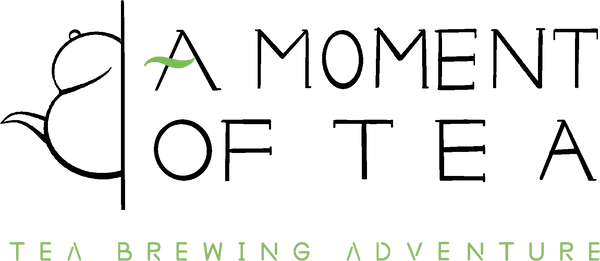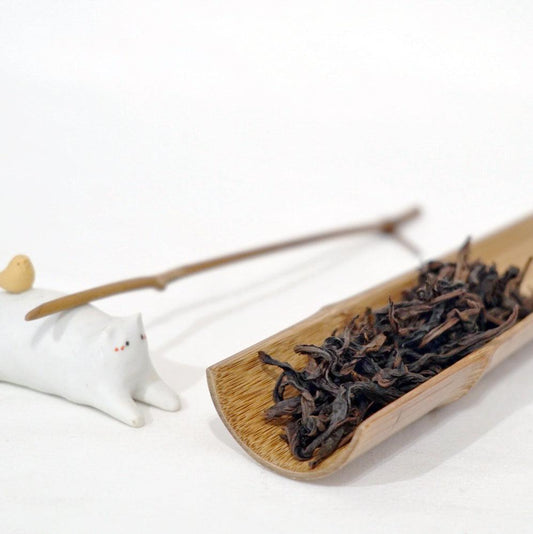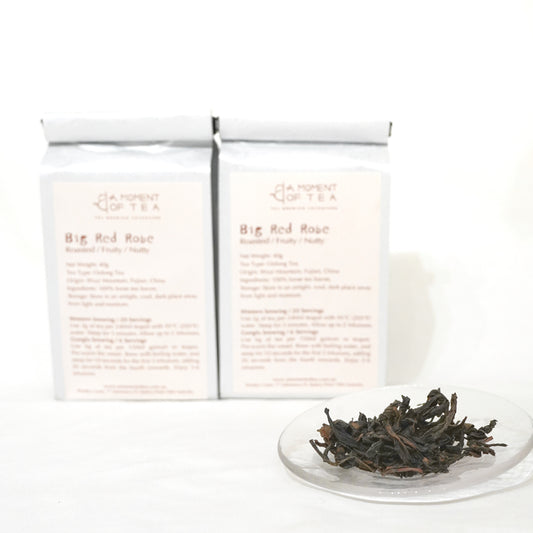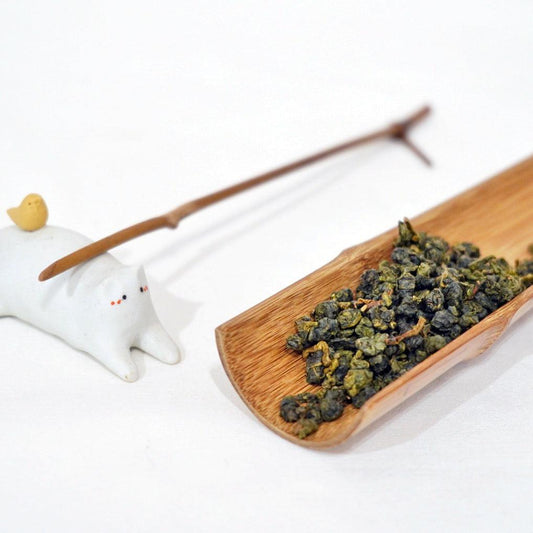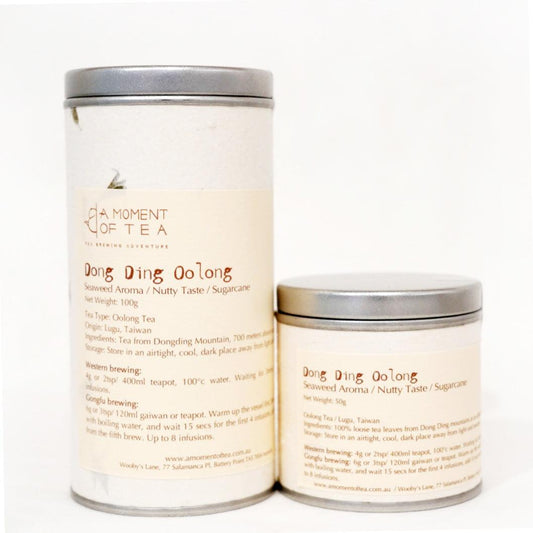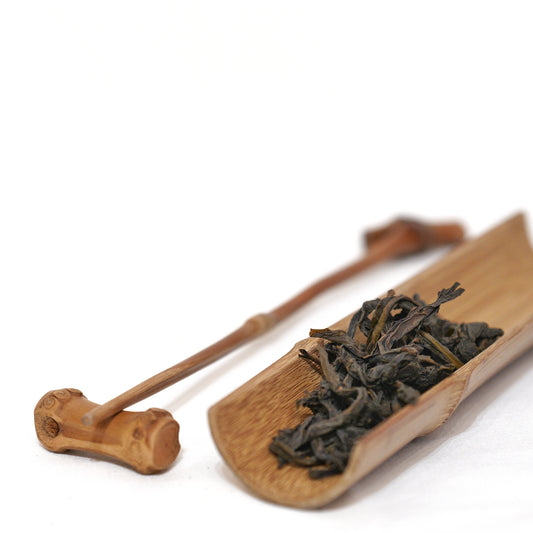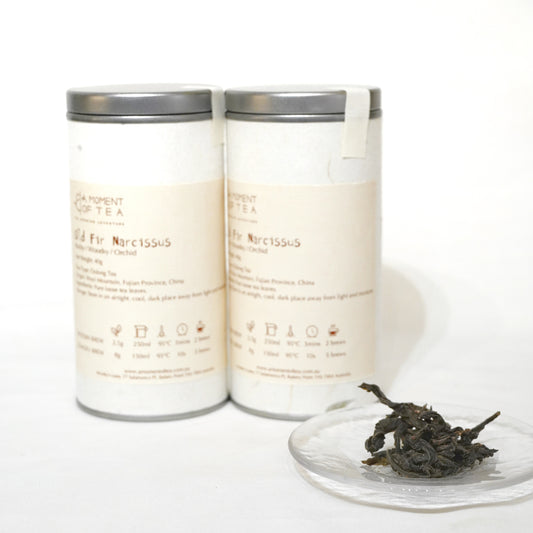Oolong Tea
-
Big Red Robe Oolong
4 reviewsRegular price From $8.00Regular priceUnit price / per -
Dong Ding Oolong
3 reviewsRegular price From $10.00Regular priceUnit price / per -
Old Fir Narcissus Oolong / Lao Cong Shui Xian
1 reviewRegular price From $10.00Regular priceUnit price / per$39.00Sale price From $10.00Sale -
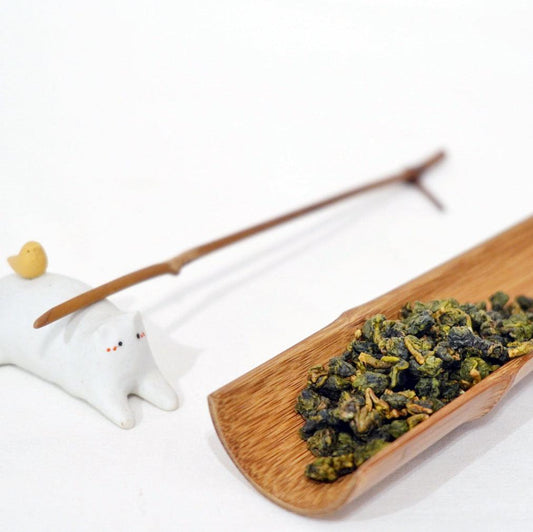
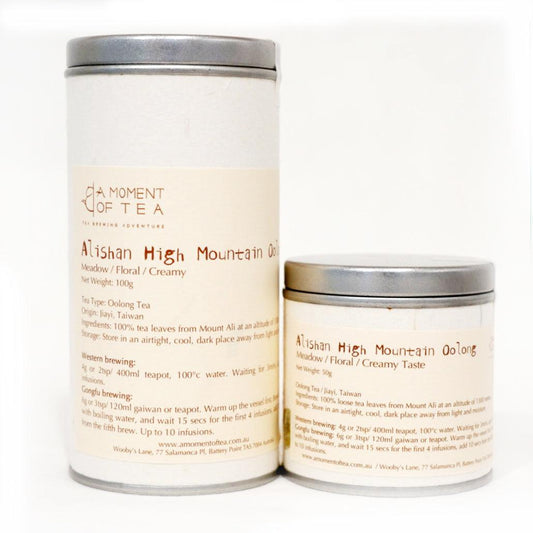 Sold out
Sold outAlishan High Mountain Oolong
No reviewsRegular price From $11.00Regular priceUnit price / per
Last year, I travelled to Wuyi Mountain in Fujian Province—the birthplace of oolong tea. I watched master tea makers tend to their roasting fires, coaxing out the complex aromas that make oolong so distinctive. One evening, our tasting session stretched from afternoon until midnight. We sampled everything from everyday oolongs to some of China's most treasured varieties.

What struck me wasn't just the incredible range of flavours, but how alert and focused I felt even at midnight. Unlike many caffeinated drinks, oolong provides sustained mental clarity without the crash. That night, walking out under the full moon, I felt a deep appreciation for the centuries of craftsmanship behind each cup.
Why Oolong is Different
Oolong occupies a unique space in the tea world. Through partial oxidation and careful roasting, these teas develop complexity that green teas can't achieve and subtlety that black teas don't offer. Each leaf undergoes a transformation that creates layers of flavour, revealing something new with every infusion.
Watching the roasting process in Wuyi Mountain was like witnessing alchemy. The tea masters control fire and timing with incredible precision, knowing exactly when to stop the roasting to achieve their desired flavour profile. This is what gives oolong its distinctive character—it's neither fully oxidised like black tea nor fresh like green tea, but something entirely its own.
In my experience, oolong works beautifully for morning focus. All our oolongs share this quality—they provide medium caffeine levels that support concentration throughout your day. Whether you're transitioning from other beverages or exploring beyond green tea, oolong offers a natural bridge.
Our Oolong Collection: From Origin to Innovation
I've curated four oolongs that follow the natural path I discovered in Wuyi Mountain—from the birthplace of oolong to its evolution in Taiwan. Each one taught me something different about this remarkable tea category.
Big Red Robe Oolong
Charcoal / Fruity / Nutty
This legendary tea from Wuyi Mountain carries deep, roasted notes that many people find familiar and welcoming. I often suggest Big Red Robe to friends making their first serious step into tea, especially those who enjoy coffee's roasted character. The charcoal notes come from traditional roasting techniques I witnessed firsthand—masters tending fires through the night to achieve that balance of roasted depth and natural fruit sweetness.
The leaves brew beautifully multiple times, with each steeping revealing different aspects. You'll taste the roasted notes first, then discover fruity undertones, finishing with a pleasant nuttiness that lingers.

Old Fir Narcissus Oolong
Rocky / Woodsy / Orchid
These leaves come from ancient tea trees growing in Wuyi Mountain's mineral-rich soil. "Old Fir" refers to the mature trees—some over a century old—that produce leaves with extraordinary depth. After tasting this alongside younger tree teas in Wuyi, I understand why tea masters prize these older plants so highly.
The "rocky" taste is distinctive to Wuyi oolongs, coming from the mountainous terrain where these trees grow. You'll notice woody undertones that speak to the trees' age, followed by surprising floral notes. It's like tasting the mountain itself—earthy, ancient, yet surprisingly delicate.

Dong Ding Oolong
Seaweed Aroma / Nutty / Sugarcane
From Taiwan's Lugu region, this represents oolong's evolution beyond its Chinese origins. What makes Dong Ding particularly practical is its tightly rolled ball shape—great for home office brewing or busy professionals who appreciate convenience without compromising quality.
The unique seaweed aroma might surprise you at first, but it develops into rich nuttiness with sweet sugarcane notes. Taiwan's high-altitude growing conditions and distinct processing methods create this completely different oolong experience.

Alishan High Mountain Oolong
Meadow / Floral / Creamy
Growing at 1,300 meters elevation, this represents Taiwan's mastery of high-mountain oolong production. The extreme altitude and cool temperatures slow leaf growth, concentrating flavours in ways that lower-elevation teas simply can't match.
I describe this as "drinking a mountain meadow." The floral notes are gentle but persistent, while the creamy texture makes each sip feel luxurious. This tea shows how different Taiwan's high-altitude approach is from the roasted Wuyi style—both equally fascinating in their own way.
The Oolong Experience: Aromatic Depth
What draws many people to oolong is its remarkable aromatic complexity. These teas release such rich, layered fragrances that you'll find yourself naturally taking deeper breaths as you drink. During my tasting session in Wuyi Mountain, I noticed this happening unconsciously—each cup invited me to pause and breathe deeply before sipping.

This aromatherapy aspect creates a more mindful tea experience. You're not just tasting, you're breathing in the work of centuries-old tea trees and master craftspeople. I think this is why so many people discover Gongfu tea brewing through oolong—the ritual becomes as much about the fragrance as the flavour.
The traditional Gongfu brewing method enhances this experience, though these teas work equally well with Western brewing techniques. Detailed brewing instructions come with each package, so you can explore whichever approach suits your lifestyle.
Natural Aromatic Development
All our oolongs contain only pure tea leaves—no artificial flavours, colours, or preservatives. The complex aromas and tastes you discover develop entirely naturally through the tea plant itself, influenced by growing conditions, processing methods, and roasting techniques.
This is why oolong flavours can seem so surprising. That "orchid" note in Old Fir Narcissus or the "seaweed aroma" in Dong Ding emerges naturally through centuries-refined processing methods. When you taste these characteristics, you're experiencing the tea plant's incredible capacity for flavour development through careful cultivation and traditional craftsmanship.

Each of these oolongs taught me something different during my tea journey—from Big Red Robe's bold roasted character to Old Fir Narcissus's ancient wisdom, Dong Ding's practical beauty, and Alishan's high-altitude grace. There's no wrong place to start your own exploration.
I'd encourage you to try a sample of whichever tea speaks to you most. That's often the best way to begin any tea journey—with curiosity and a willingness to discover something new.
